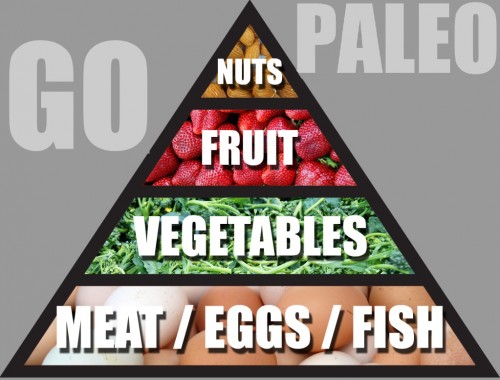Necessity is the mother of invention. Diabetics require a low glycemic diet. Low glycemic is the same term as a low carbohydrate diet. Foods rich in complex carbohydrates (starch) bread, cereals and pasta.
Simple carbohydrates (sugar) desserts and candy. Paleo Diet is free of most food rich in complex or simple carbohydrates. Read More.
For caveman and women being healthy was a matter of survival. Paleolithic diet: meat, poultry, fish, eggs, vegetables, fruits, seeds, nuts, herbs and leaves. Caveman existed over 10,000 years ago. Cavemen traveled in small tribes.
The only means of travel was by foot. There were no doctors or medicine. The only means to insure good health was diet.
Finding food and shelter was a constant challenge. Fruits, vegetables and herbs were gathered subject to the seasons. Poultry and fish were easy pickers compared to wild animals. Wild animals had to hunted for food. Capturing an animal was a survival of the fittest. It was a battle of kill or be killed.
Animal meat, wild game and eggs in the diet provide the necessary protein the body needs. Cavemen not only eat captured wild beast but the skin and fur was used for clothing and shelter. Crude weapons were made of stone. Coining the name, “Stone-Age”.
Vegetables, fruits, seeds and nuts could be plentiful depending on the location and seasons. Majority of vegetables and fruits are low carbohydrate foods. Cavemen ate food raw. Excluded from their diet was grain, potatoes and legumes. Uncooked these food contain toxins called, anti-nutrients.
Grain, potatoes, legumes were not consumed until the Neolithic period. During the Neolithic period agriculture and cooking was discovered. Cooking these foods kills most of the toxins making them edible. Keep in mind that the modern Paleo diet still excludes these foods. Cooking kills most of anti-nutrients but not all.
Why is the foods glycemic level important to diabetics?
Glycemic index measures carbohydrate levels in foods and the effect these levels have on the body’s blood sugar levels. Carbohydrates become glucose in the body.
Foods with high sugar or starch levels break down more quickly in the digestion system releasing high levels of glucose.
The pancreas overworks releasing more insulin to bring the blood sugar levels back to normal. Conversely, food with low glycemic index glucose is released slowly into the bloodstream resulting a smaller fluctuation of glucose in the bloodstream and tending not to overwork the pancreas process of insulin.
Generally, vegetable and fruits have a low glycemic index or are low carbohydrate foods. The few plants that are medium glycemic indexed are: beets, pineapple and raisins.
Vegetable and fruits not only are low carbohydrate foods but low fat foods. Fats are “macronutrients”. Saturated fats found in meats, fish, poultry skin and whole milk. Surprise, saturated fats are found in coconut oil, palm kernel and palm oils. Saturated fats tend to be solid at room temperature and are considered (bad fats).
Vegetables have unsaturated fats. Unsaturated fats are liquid at room temperature and are (good fats). High fat diets increases cholesterol levels and excess fat is stored in the body causing weight gain.
Diabetes Benefits of Paleo Diet Improves Blood Cholesterol Levels Reduces Triglycerides (fats in blood) Reduces Risks of Heart Disease Reduces Risks of Hardening of Arteries Reduces Risks of 2 type Diabetes Diabetes Management Low Fat Diet Paleo Weight Loss and Weight Maintenance Diet (body stores excessive carbohydrates and fats) Increase Energy Potatoes, Wheat Flour, Dairy, Processed Sugar and Honey excluded from Paleo Diet.
Paleo Diet Gluten, Dairy, Preservative and Soy Free High consumption low glycermic or low carbohydrate foods (fruits and vegetables). Paleo Diet Low Carbohydrate Diet and Low Fat Diet
The Paleolithic diet given by Mother Nature to the Caveman for optimal health. Ancestral Caveman diet given to the modern man Take Control of Your Health. Any diet has to be combined with exercise. Plan a daily exercise routine that is comfortable with your lifestyle.







